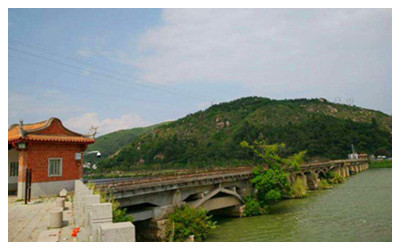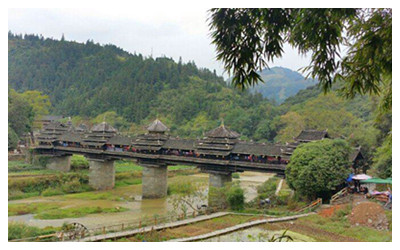- Home
- Travel In China > China Culture > Chinese Architecture >
Ancient Chinese Beam Bridges
Ancient Chinese Beam Bridges is one of types of Chinese ancient bridges. The beam bridge can be dated to back 400 years. Here we will introduce the history of Ancient Chinese Beam Bridges, and the top Ancient Chinese Beam Bridges.
Ju Bridge
The earliest reference to the beam bridge in Chinese history is the Ju Bridge dating from the Shang Dynasty (16th-11th century B.C.). King Wu of the Zhou Dynasty launched a campaign against King Zhou (Zhou Wang), and having captured Zhaoge -capital of the Shang Dynasty (now northeast to Quzhou County, Hebei Province), at the Ju Bridge, he ordered a hoard of millet distributed to the relief of the poor. From the Zhou Dynasty through to the Qin and Han Dynasties, bridges with timber beams and stone piers were predominant.
Anping Bridge
During the Song Dynasty, a large number of stone-pier and stone-beam bridges were constructed. In Quanzhou alone, as recorded in ancient books, 110 bridges were erected during the two centuries, including ten well-known ones. For example, the 362-span Anping Bridge was known for its length of 5 li (2223m), a national record for over 700 years.
Five Li Bridge
Five Li Bridge is now 2100m long. Its construction lasted 16 years, from the 8th year (A.D. 1138) to the 21st year (A.D. 1151) of the reign of Shaoxing of the Song Dynasty.
Wan'an Bridge
Wan'an Bridge is the 47-span Wan'an Bridge, situated at the outlet of the Luoyang River to the sea,
Luoyang Bridge.
Luoyang Bridge is about 890m long and 3.7m wide. The construction began in the 5th year of the reign of Huangyou (A.D. 1053) and ended in the 4th year of the reign of Jiayu (A.D. 1059) of the Song Dynasty. Both bridges are included in the list of major cultural relics under state protection.
 Jiangdong Bridge
Jiangdong Bridge
The Jiangdong Bridge in Zhangzhou, Fujian Province boasts the largest stone beams. In the first year of the reign of Jiaxi (A.D. 1237) of the Song Dynasty, the timber beams of this bridge were replaced by stone ones. The bridge had 15 spans, each consisting of 3 slices of stone beams. But today only 5 spans remain. The largest stone beam, 23.7m in length, 1.7m in width and 1.9m in height, weighs 2000 kN (200 tons). It seems incredible that such an arduous task could be performed then as there was no heavy-duty craning equipment to quarry the stone and to haul to the site and set in position such enormous stone beams.
Yinping Bridge
The extant single-span timber cantilever bridge, the Yinping Bridge at Wenxian, Gansu Province, which was rebuilt in the Qing Dynasty, has a span of more than 60m with covered housings on it.
To elongate the span, either the timber beams or the stone ones were placed horizontally on top of each other, the upper layer cantilevering over the lower one, thus supporting the simple beam in the middle. That kind of stone beam is called Diese (overlapping beam), which, however, could not extend long; while the timber cantilever beam, called "flying bridge" or "extended arm bridge", could reach as far as 20m. The earliest record of the timber cantilever beam dates as far back as the 4th century B.C.
 Chengyang Bridge
Chengyang Bridge It was common practice to build bridge housings or galleries on timber beam bridges, and a case in point is the fengyu bridge (all-weather bridge) built by the Dong people. Situated at Sanjiang Dong Autonomous County, Guangxi
Zhuangzu Autonomous Region, the Chengyang Bridge across the Yongji River, built in 1916, is a 644m 4-span timber cantilever covered bridge. Each of its 5 piers is crowned by a pavilion and the decks are roofed by a spacious gallery, which joins the pavilions. The pavilions not only perform the function of balance, but have added to the charm and elegance of the bridge as well.

 Jiangdong Bridge
Jiangdong Bridge Chengyang Bridge
Chengyang Bridge  Ask Questions ?
Ask Questions ?